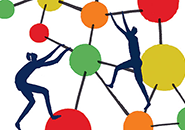
Scientific Discipline
Molecular Biology, Virology
Host Institution
University of California, San Francisco
Current Position
Dr. DeRisi is also the chair of the Biochemistry and Biophysics Department at the University of California, San Francisco, where he also holds the Gordon Tomkins Chair of Biochemistry and Biophysics, as well as the Albert Bowers Chair in Biochemistry.
Current Research
Genomics and Infectious Disease
Biography
To describe Joseph DeRisi as a molecular biologist who has made major contributions to malaria research would be accurate, but it would also be incomplete. He might be described more precisely as a scientific polymath who delights in tinkering with new technology, moves readily among disciplines, shares what he knows as widely as possible, and dives fearlessly into new scientific challenges.
DeRisi helped pioneer the use of DNA microarray technology as a graduate student. He now uses that same approach to study the activity of the full range of malaria genes and has already generated provocative insights. Malaria and emerging viral diseases, including severe acute respiratory syndrome (SARS) and avian flu, represent serious threats to world health. Efforts to control malaria—which kills some 2.5 million people a year, mostly children—have made only halting progress and drug resistance is now emerging as a grave problem.
DeRisi's analysis of gene expression in Plasmodium falciparum, which causes the most deadly form of human malaria, has revealed that an unusually high percentage of genes are expressed in a highly periodic fashion during the parasite's life cycle—many only once and in a specific order—as it invades and destroys red blood cells. This finding reveals a vulnerable point in the malaria parasite's life cycle, a weak spot where drugs and vaccines could be especially effective. DeRisi, together will his collaborator Kip Guy, has begun screening new antimalarial compounds.
In a separate area of research, DeRisi and his colleagues created a "virus chip"—a comprehensive array of the most conserved and characteristic DNA sequences from each viral family. This broad array maximizes the probability of detecting a new virus. The chip is used for rapid detection of viruses and discovery of unknown viruses. In 2003, he used the chip to identify and characterize the SARS virus within 24 hours after receiving a sample from the Centers for Disease Control.
Articles & News
Research Papers
Selected Research Papers




